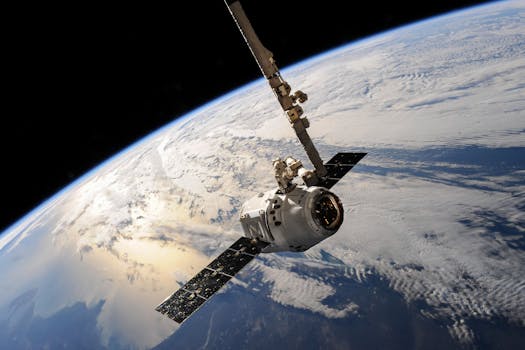
GEO Satellites: The Backbone of Global Connectivity
GEO satellites, or Geostationary Orbit satellites, are a type of satellite that orbits the Earth at an altitude of approximately 36,000 kilometers, remaining stationary above a fixed point on the equator. This unique characteristic allows GEO satellites to provide continuous coverage of a specific region, making them ideal for a wide range of applications, including telecommunications, navigation, and remote sensing. The focus keyword GEO satellites is used to describe these satellites, which are a crucial part of modern satellite technology.
The history of GEO satellites dates back to the 1960s, when the first geostationary satellite, Syncom 2, was launched. Since then, the technology has evolved significantly, with modern GEO satellites offering higher bandwidth, improved performance, and increased lifespan. Today, GEO satellites play a vital role in providing global connectivity, enabling communication, navigation, and remote sensing applications that are essential for various industries, including telecommunications, transportation, and weather forecasting.
One of the primary advantages of GEO satellites is their ability to provide continuous coverage of a specific region. This makes them ideal for applications that require constant communication, such as telecommunications and navigation. GEO satellites are also used for remote sensing applications, such as weather forecasting, crop monitoring, and disaster management. Additionally, they provide a reliable means of communication for remote or underserved areas, where traditional communication infrastructure is limited or non-existent.
Applications of GEO Satellites
GEO satellites have a wide range of applications, including telecommunications, navigation, remote sensing, and weather forecasting. In the telecommunications sector, GEO satellites are used to provide internet connectivity, voice communication, and data transmission services. They are also used for navigation purposes, providing location information and timing signals for GPS and other navigation systems. Remote sensing applications include weather forecasting, crop monitoring, and disaster management, where GEO satellites provide critical data and imagery to support decision-making.
In addition to these applications, GEO satellites are also used for scientific research, including Earth observation, space weather monitoring, and astronomical research. They provide a unique platform for conducting scientific experiments, collecting data, and testing new technologies. Furthermore, GEO satellites play a critical role in supporting international cooperation and collaboration, enabling global communication and data exchange between governments, organizations, and industries.
Challenges and Limitations of GEO Satellites
Despite the many benefits of GEO satellites, there are also several challenges and limitations associated with their use. One of the primary challenges is the high cost of launching and maintaining GEO satellites, which can be prohibitively expensive for many organizations and countries. Additionally, GEO satellites are subject to interference from other satellites and terrestrial systems, which can impact their performance and reliability.
Another challenge facing GEO satellites is the growing issue of space debris. As the number of satellites in orbit increases, so does the risk of collisions and debris generation, which can pose a significant threat to the integrity of GEO satellites and other space-based systems. Furthermore, GEO satellites are also vulnerable to cyber threats, including hacking and jamming, which can compromise their security and performance.
Future of GEO Satellites
Despite these challenges, the future of GEO satellites looks promising, with ongoing advancements in technology and innovation. Next-generation GEO satellites are being designed to offer higher bandwidth, improved performance, and increased lifespan, enabling new applications and services. Additionally, the development of new launch technologies and business models is making it more accessible and affordable for organizations and countries to launch and operate GEO satellites.
In conclusion, GEO satellites play a vital role in providing global connectivity, enabling communication, navigation, and remote sensing applications that are essential for various industries and aspects of modern life. As the demand for satellite-based services continues to grow, the importance of GEO satellites will only increase, driving innovation and investment in this critical sector.

